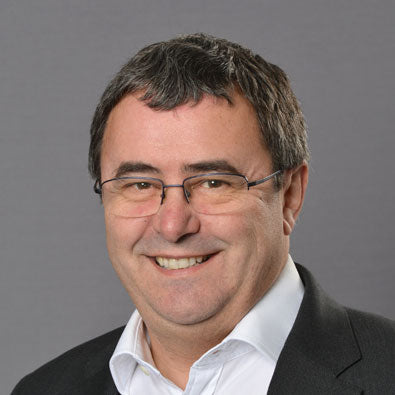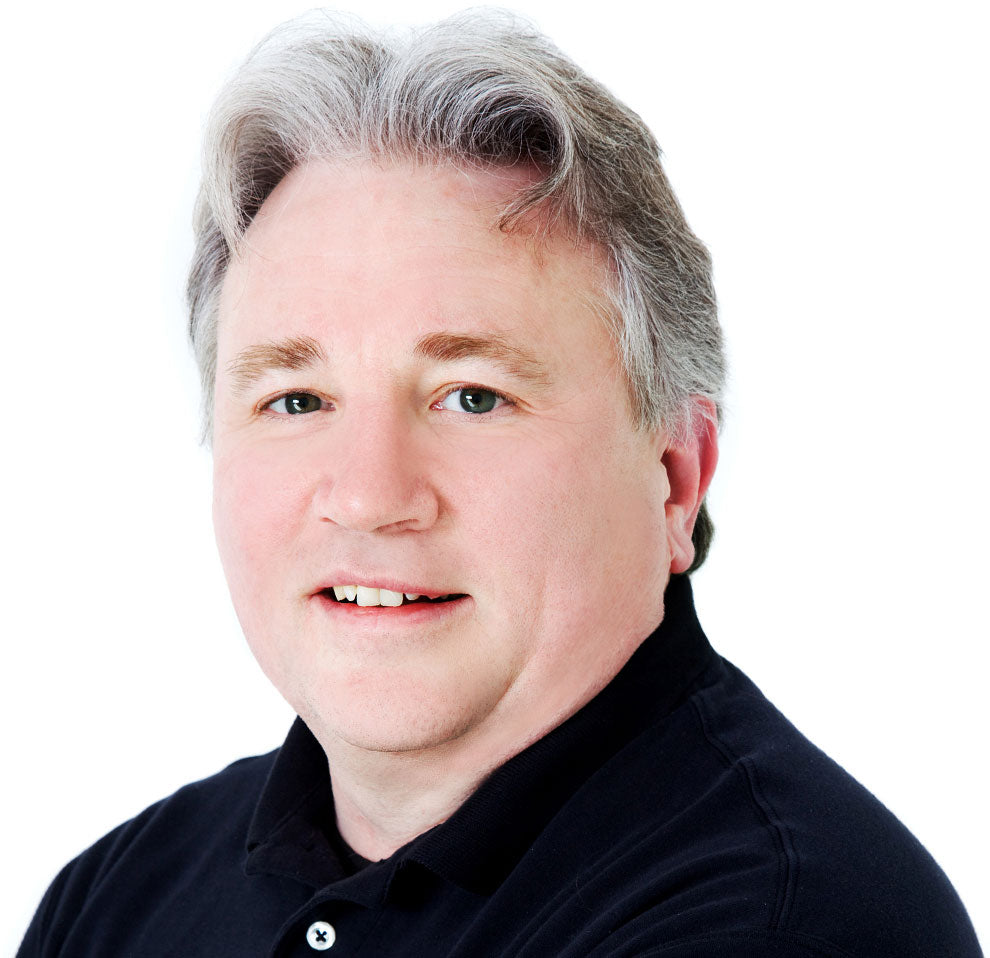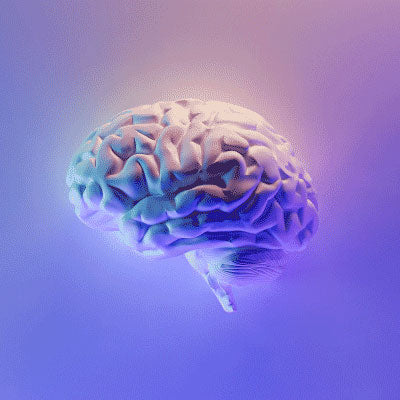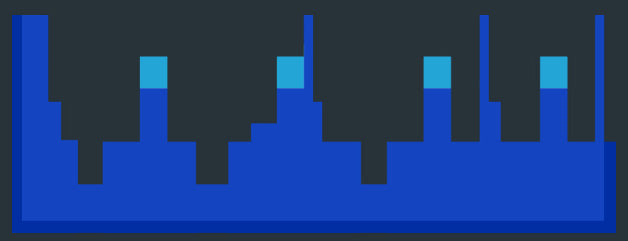The Science of the SleepHub® Sleep Sound
The sound technology behind SleepHub® has been developed and refined for more than 10 years by a team of researchers, scientists, sound and medical experts - our creators, Cambridge Sleep Sciences.

“We’re incredibly excited about SleepHub® because it is a genuine break-through in the management of poor sleep and insomnia. It’s a very novel treatment that doesn’t have the problems of drugs, or the problems of requiring a large number of expert clinicians to deliver it, which can be a limiting factor in healthcare delivery.”
- Dr Chris Dickson
Chairman of Cambridge Sleep Sciences.

Understanding what happens when we sleep
Although falling asleep may feel like our brain and body is shutting down, there is actually a lot happening within our brain. During a typically ‘good’ nights’ sleep, the brain moves through five cycles of sleep. Within each cycle there are specific sleep stages and electrical patterns of brain waves that occur, predominantly Alpha, Theta, Delta. These frequencies are measured by sleep scientists in hertz (Hz).
Sleep data shows that in adults over the age of 22, normal and healthy human sleep cycles are remarkably similar, with sleep stages in a specific sequence and correct order.
How SleepHub® works
SleepHub® uses neuroscience and exclusive sound technology. Our researchers investigated how soundwaves can influence our brain activity, even when we’re asleep. By developing scientifically engineered soundwaves at the right frequencies and in a programmed order, they discovered it was possible to guide our brain through a text book sequence of sleep cycles and sleep stages.
Through two finely tuned speakers, SleepHub® plays psychoacoustic sounds with sinusoidal waveforms, in stereo. The sounds are formed of low frequency pure tones, which we call Sleep Sounds. Sleep Sounds emulate the brain activity which occurs during optimal sleep cycles, heard through the auditory pathways and received by our brain during sleep.
By selecting one of the three sleep modes or the nap mode, the user is guided through falling asleep, following natural sleep cycles in the correct order, until the sleep programme ends and a state of awakening happens at the right time in the sleep cycle. This can result in the user waking feeling refreshed and energised, ready for the day.

Experts in the science of sound
Colin Aston-James is an expert in the science of sound and is the creator of the SleepHub® sound technology;

“"Sound is a very powerful and effective means of changing brain state and improving mood. We’re only just beginning to uncover some of the health benefits of carefully crafted sounds. By harnessing the brain’s natural response to certain sound frequencies, SleepHub® guides the brain through good quality sleep cycles in the correct order, thus helping with falling asleep, staying asleep and waking feeling refreshed."”
- Colin Aston-James
creator of the SleepHub® sound technology
Sound has been used by humans throughout history to alter mood and affect brain states. Discover more about the history of sound therapy here.
Forming good habits: Sleep training with SleepHub®
With increasingly demanding lifestyles and circumstantial life events, our brain can gradually fall out of sync with natural sleep cycles. Our brains can actually ‘forget’ the correct sequence of sleep cycles and sleep stages. This is when sleep issues, such as insomnia, begin to develop and poor sleep habits can set in.
The SleepHub® Sleep Sound serves as a training aid to help you form new healthy sleep habits, addressing sleep issues for good.
The neuroscience approach
Our brain has two hemispheres – the left and right. When you experience repetition of an action, behaviour or stimuli, the fibres in the central part of the brain are strengthened. Whole brain synchronisation is improved as your brain passes information back and forth between each side. This strengthening of the brain’s connections is just like muscle growth and is called neuroplasticity.
Neuroplasticity is essentially the process of training our brains and the organisation of neural pathways. When we’re learning something new or forming a habit, new neural connections are made in our brains.
The benefits of whole brain synchronisation can include an increase in overall mental health, enhanced cognitive performance and problem solving ability, better memory and creativity and less anxiety.
Studies suggest that the REM stages of sleep play an essential role in strengthening the brain’s ability to memorise information and good sleep can support this. Therefore, getting better sleep can yield better learning results and improve your memory.

Neuroplasticity and SleepHub®
In the same way that poor sleep can be learned over time, the good news is that good sleep can be re-learned! The best way to break any bad habit is with repetition of a good one. Reverting to your natural sleep cycle is like training for any sport - the more often you let your brain ‘practice’ getting back into natural sleep patterns using SleepHub® the better your experience will be.
Clinical trial of SleepHub®
As part of its development, we tested SleepHub® with a cohort of individuals who had been experiencing established insomnia for a period longer than three months, and who were not taking sleep medication. The positive responses from this trial provided evidence using a validated patient reported outcome tool, the Pittsburgh Sleep Quality Index (PSQI) that SleepHub® can re-train the brain to revert to natural sleep patterns.
In an independent study of SleepHub® with participants with at least 3 months history of insomnia,
More than 10 years of research and development: The story of how SleepHub® came to be:
The SleepHub® journey started by looking for a ‘non-drug’ based cognitive enhancer to help students improve learning and increase their intellect and lucidity.
We knew that certain types of music can have a powerful effect on a listener’s mood so we explored why that was and what music – if any – could help with our project. Once we had found certain musical passages, we then investigated further into what, in particular, was having the effects we were seeing.
From there, we realised that – through sound alone – we could change an individual’s ‘state’, such as fully awake, ‘drowsy or fully asleep. The SleepHub® technologies were developed from further research into sleep and all of its complexities. The more we understood sleep, the more fully we realised that we could apply the research that we had undertaken for students and employ that to help people who have difficulty sleeping, and help improve quality of sleep.
SleepHub® timeline
Why do we need sleep?
In its’ right quantity and quality, sleep can vastly improve our overall wellbeing and everyday mental, physical and cognitive performance. Sleep quality is something which is commonly overlooked and can be taken for granted.
Athletes and sports professionals put a lot of emphasis on getting the right amount of rest and sleep because it’s crucial for preventing injury, aiding performance and boosting recovery.
Getting consistent sleep, which has all five sleep stages over four to five sleep cycles in the right order, is a lost art for many of us, which is where SleepHub® helps to regain those normal and natural sleeping patterns.
As a key pillar of health, good quality sleep can support good nutrition and good exercise, helping you to achieve balance.
The benefits of good sleep
The benefits of good sleep are many, and can include:
-
Improved decision making
-
Better reaction times
-
Healthy hormone production
-
-
Minimising risk of accidents and errors
-
-
Reduced risk of certain diseases

Healthy sleep stages and sleep cycles in the correct order
SleepHub® has been developed to help you get consistent ‘text book’ sleep. But what should happen within our brain during a healthy nights’ sleep?
- Before we fall asleep, there is usually a time of relaxed wakefulness or drowsiness. Our brain activity slows down and we fall into stage 1 of non-REM sleep. This stage only lasts a few minutes as we are drifting off.
- Then follows stage 2 of non-REM sleep. During this stage there are no eye movements or dreaming and you can easily be woken up.
- Sleep then deepens into stage 3 non-REM sleep, where rolling eye movements occur. Heart rate and breathing rate is regular during non-REM sleep.
- After about an hour of non-REM sleep, sleep lightens, and briefly passes through stages 2 and 1 again.
- Following this, the first episode of REM sleep occurs. This stage will last around 10 - 20 minutes. Eyes move rapidly, heart rate and breathing rate become irregular.
- After completing one full sequence of non-REM and REM sleep, this is called a sleep cycle.
- The second episode of non-REM sleep progresses much like the first, and after about an hour, returns rapidly through stages 2 and 1 to another episode of REM sleep.
- This second REM episode lasts longer than the first - about 30 minutes. The third episode of non-REM sleep includes less stage 3 non-REM sleep, perhaps none. Again, after about an hour, there is a return to REM sleep, and that third bout of REM is usually even longer than the second - about 45 minutes.
- Overall, these sleep cycles of non-REM and REM sleep average about 90 minutes. After the last episode of REM sleep, we wake up. We almost always awake in the morning from the last episode of REM sleep.
SleepHub®: a one size fits all?
Sleep researchers use a computer program and a graphic representation called a hypnogram to track states over the sleep phase. During studies, when hypnograms are compared, the data reliably shows that the structure of human sleep is the same for nearly everyone over the age of 22. This is why SleepHub® can be used by so many people.
There are 3 sleep modes and a nap mode for the user to select a sleep programme that suits their preference and circumstance. The Sleep Sounds are optimised in each programme to provide the user the appropriate sleep cycles and sleep stages in the given length of time.
SleepHub® sleep modes:
SleepHub® features 3 sleep modes and a nap mode.

Deep Sleep:
An 8 hour programme including an 18 minute wake-up cycle and fixed alarm time. Ideal if you have a regular schedule which allows for an undisturbed 8 hour rest period.

Easy Sleep:
An alternative to Deep Sleep for when you only have a set amount of time to sleep. Easy Sleep takes you through the optimum sleep pattern for the time period up to your alarm - which can be between 2 - 8 hours from beginning the programme.

Fall Asleep:
This 2 hour programme guides you into deep sleep. Ideal if you struggle to fall asleep but remain asleep, once you do. You can set an optional wake-up alarm for a time of your choice.

Power Nap:
A choice of 30, 45 and 60 minute programmes, with optional wake-up alarm. Ideal if you need an energising nap.
What does SleepHub® sound like?
How much sleep should we have?
A sleep duration which allows your brain to experience all five sleep stages, over four to five cycles is important for many functions, as Dr Chris Dickson of Cambridge Sleep Sciences explains.

“A healthy sleep duration should allow the brain to complete all five of the cycles it needs. Breaking up your sleeping pattern can deprive you of those cycles. The first three of the brain’s cycles are important for allowing your brain to perform its basic ‘housekeeping’ duties such as memory consolidation and clearing out toxins, for which you’ll need at least 5 hours of continuous sleep. The last two cycles are key for hormone production, such as testosterone and human growth hormone. These cycles are also thought to promote creativity and ideas. When we were creating SleepHub®, our research guided us to create the optimal sleep programme (Deep Sleep mode) of 7 hours and 40 minutes plus an 18 minute wake-up cycle.”
- Dr Chris Dickson
Chairman of Cambridge Sleep Sciences.


Better sleep with SleepHub®
SleepHub® is a simple and easy way to improve natural sleep quality.
Using neuroscience and sound technology SleepHub® trains the brain to sleep optimally - all while you sleep!
Created for those who want to improve their sleep for better physical & mental performance.
Backed by 10+ years of scientific research and development and fantastic customer & press reviews
